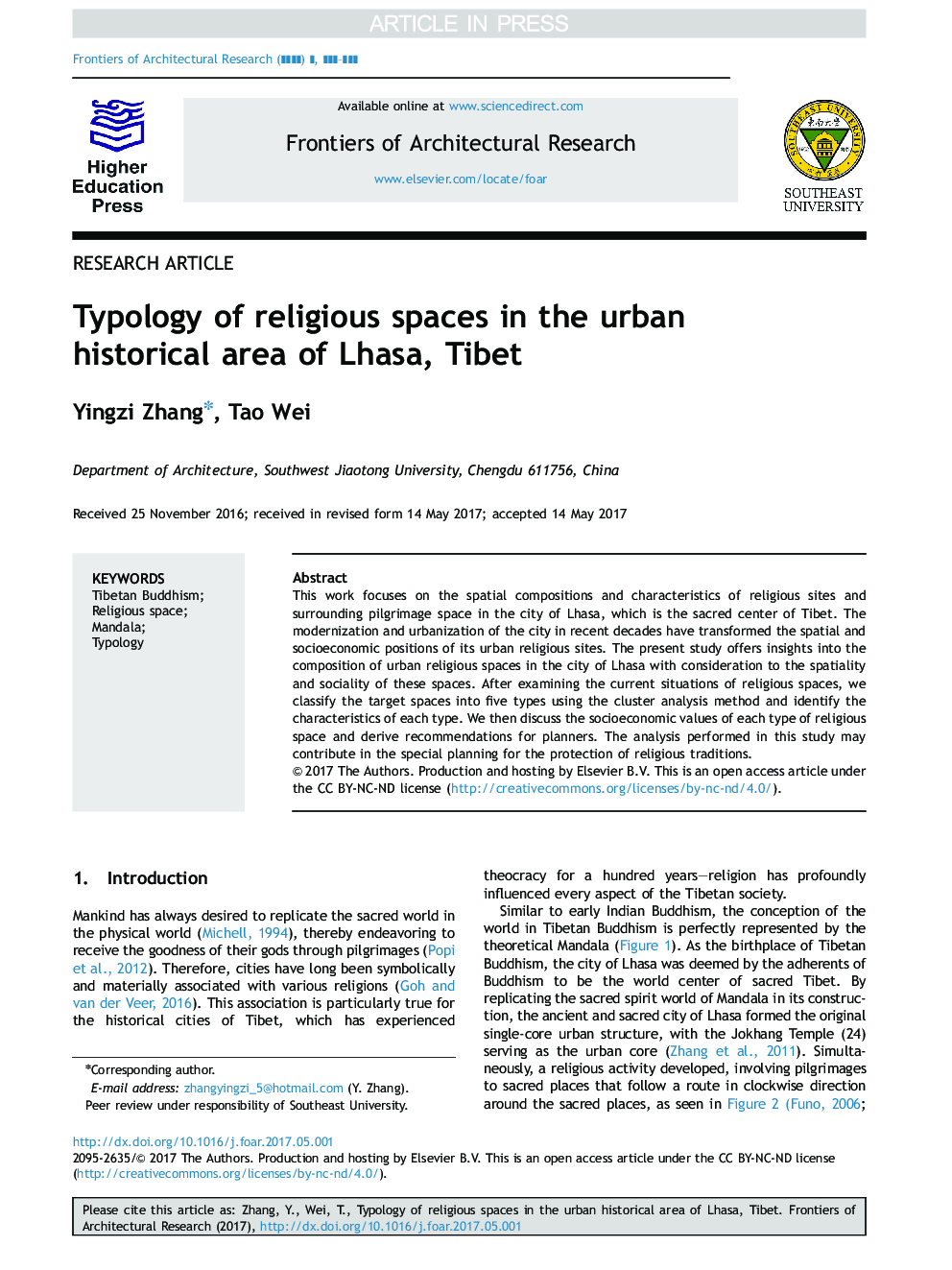| Article ID | Journal | Published Year | Pages | File Type |
|---|---|---|---|---|
| 6742508 | Frontiers of Architectural Research | 2017 | 17 Pages |
Abstract
This work focuses on the spatial compositions and characteristics of religious sites and surrounding pilgrimage space in the city of Lhasa, which is the sacred center of Tibet. The modernization and urbanization of the city in recent decades have transformed the spatial and socioeconomic positions of its urban religious sites. The present study offers insights into the composition of urban religious spaces in the city of Lhasa with consideration to the spatiality and sociality of these spaces. After examining the current situations of religious spaces, we classify the target spaces into five types using the cluster analysis method and identify the characteristics of each type. We then discuss the socioeconomic values of each type of religious space and derive recommendations for planners. The analysis performed in this study may contribute in the special planning for the protection of religious traditions.
Related Topics
Physical Sciences and Engineering
Energy
Renewable Energy, Sustainability and the Environment
Authors
Yingzi Zhang, Tao Wei,
